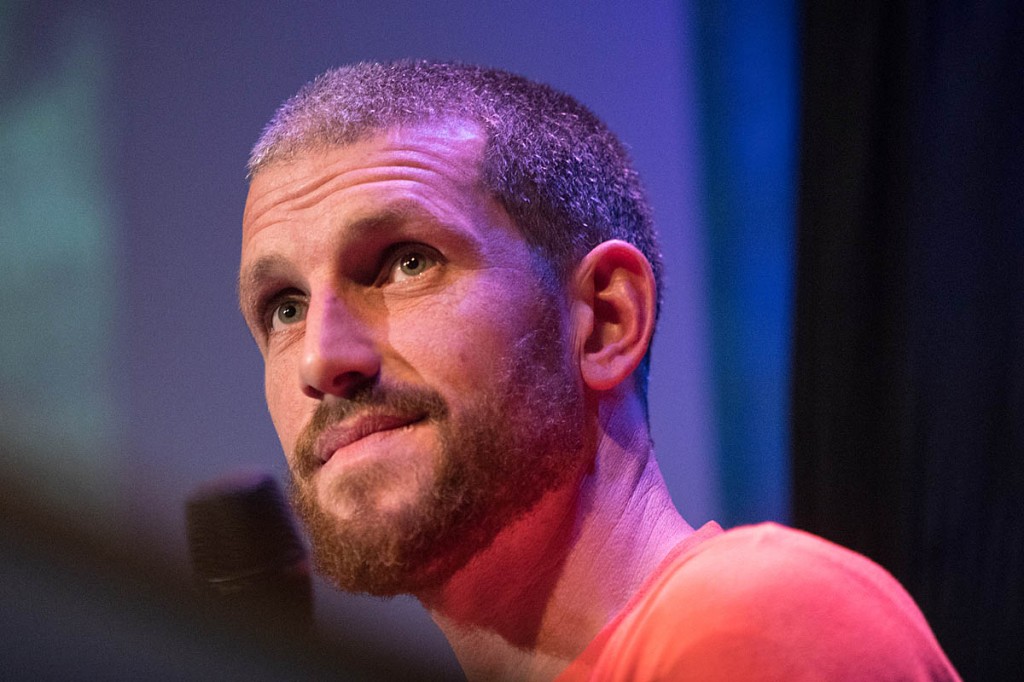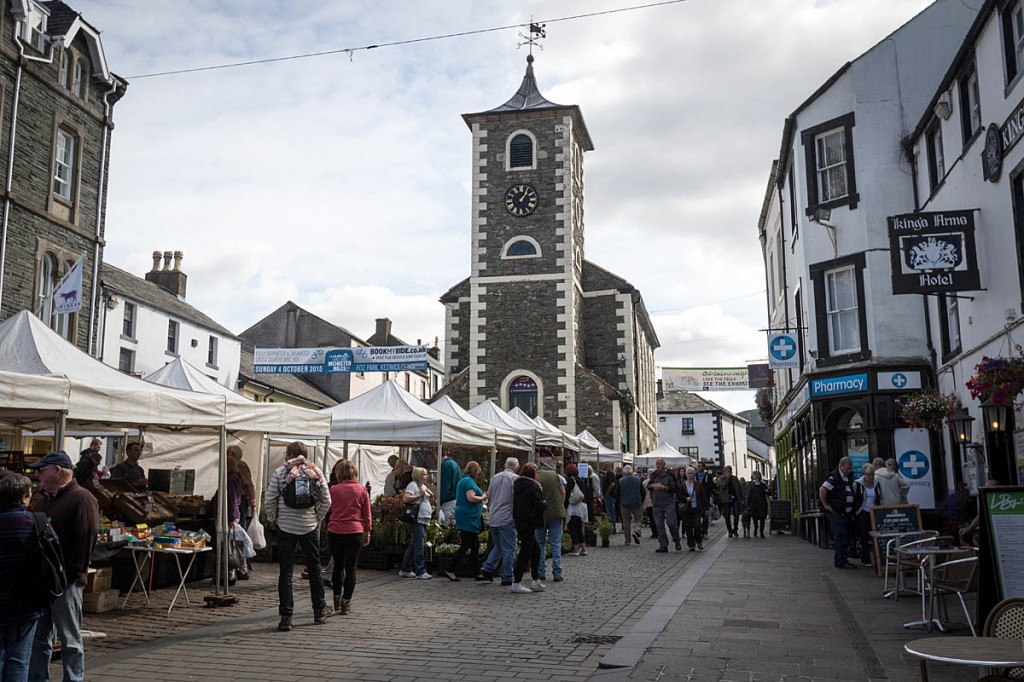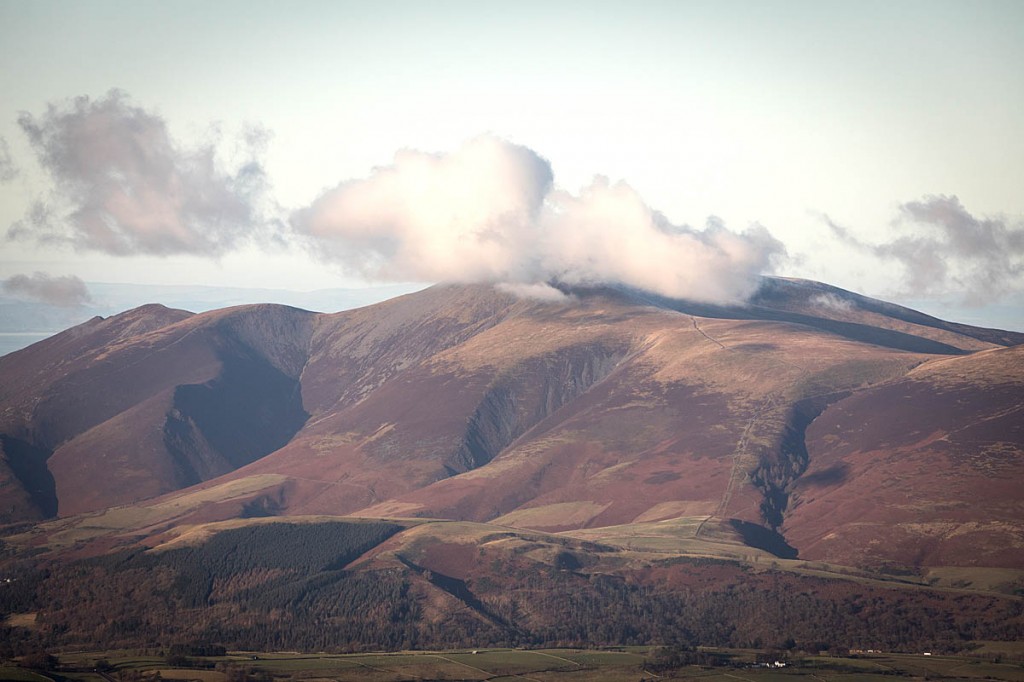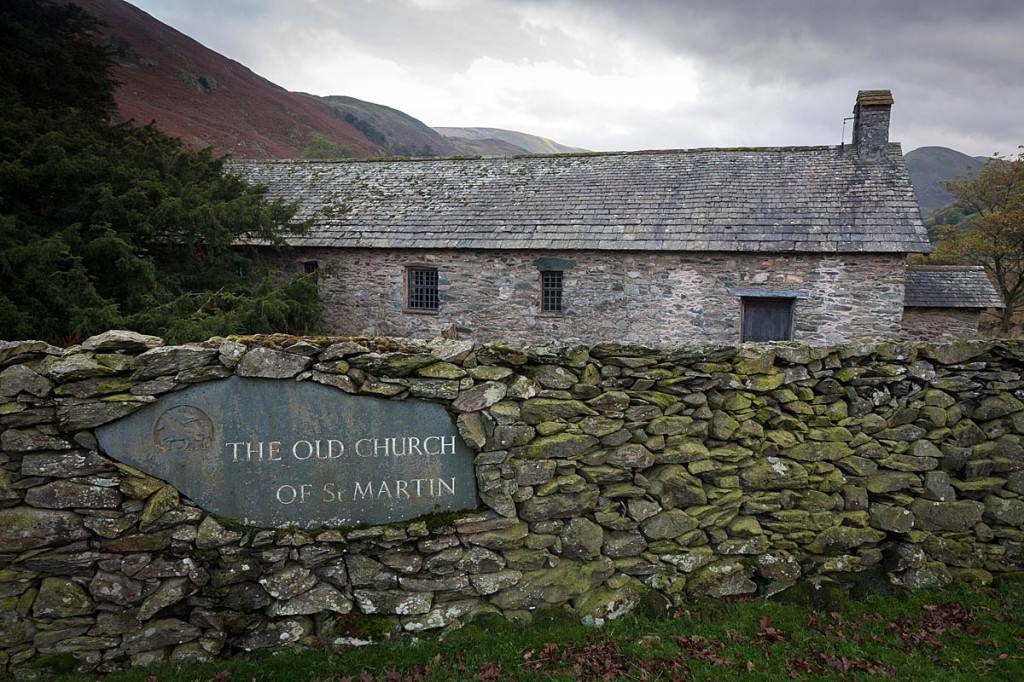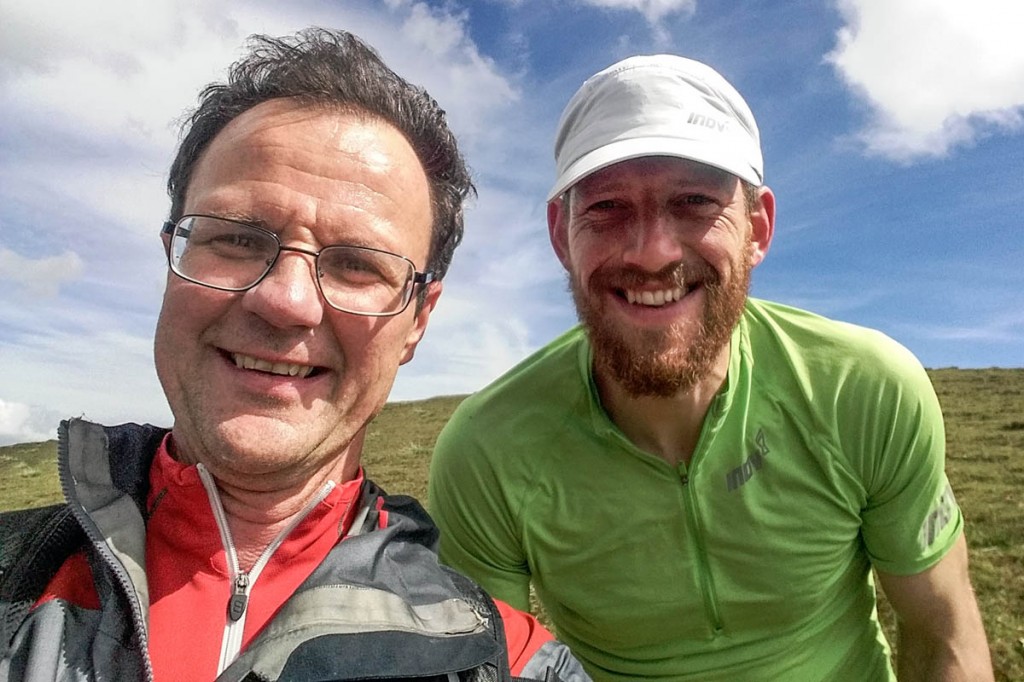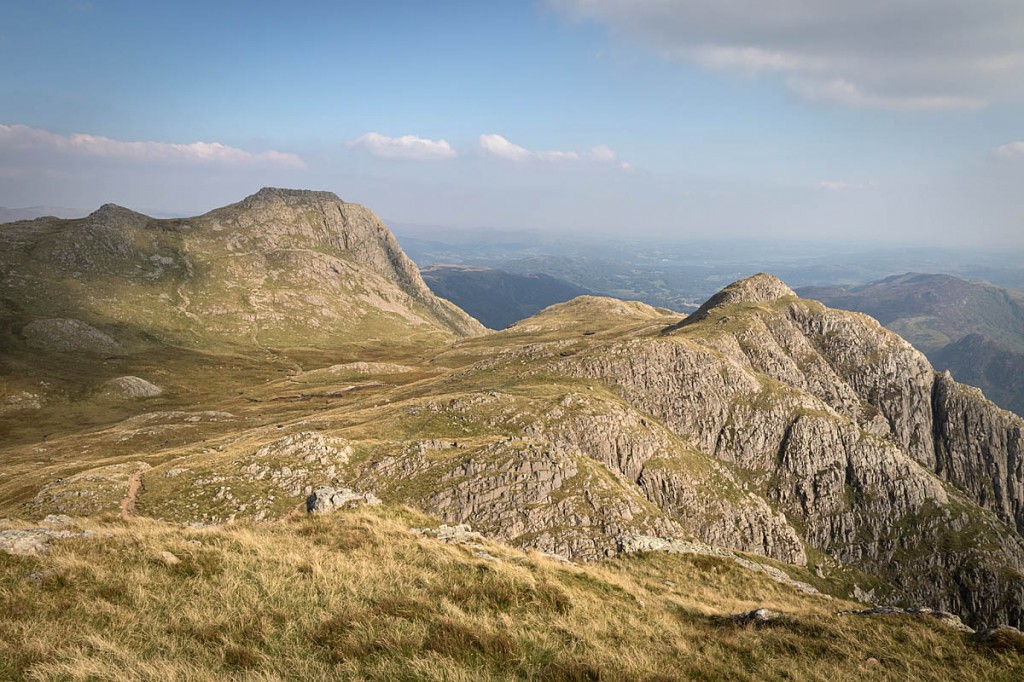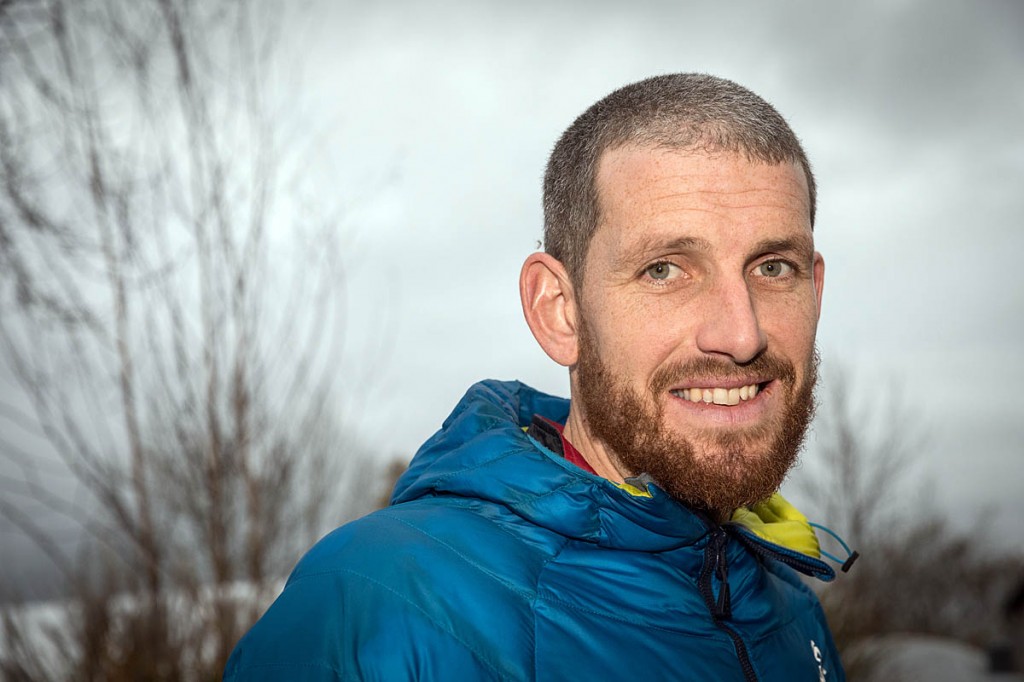The author Alfred Wainwright took 13 years to write his seven-volume series of Pictorial Guides to the Lakeland Fells, meticulously researching and detailing the 214 mountains he chose as worthy of ascent.
Since then, countless walkers have successfully ‘bagged’ all the fells that are now known as Wainwrights and, until this year, only three runners had completed a continuous round of the peaks, which are all within the Lake District national park.
In 1985 fellrunner Alan Heaton finished a round of the Wainwrights at the Moot Hall in Keswick, the spot where he had begun his attempt nine days and 16 hours earlier. Within a year, Lakeland legend Joss Naylor had taken the time down to seven days, one hour and 25 minutes, a record that would stand for another 28 years, when Cumbrian resident Steve Birkinshaw chopped the time for the 515km (320-mile) route, involving 36,000m of ascent, to six days 13 hours.
The taciturn Wainwright, who believed there was no point in rushing an ascent, would doubtless have disapproved of these superhuman ventures.
But that didn’t stop a former Cork police officer eyeing up the record and one June Friday this year, he stood on the steps of the Moot Hall to start his attempt on Birkinshaw’s fastest time.
What was going through Paul Tierney’s mind as he stood in Keswick about to start the run?
“On the steps at the start I was really worried because in the month to six weeks beforehand I’d been struggling with hay fever and allergies,” he told grough. Apparently this year the pollen count was quite high and there’s really high grass behind where we live and it was cut about a week before I started and all the stuff was coming into the house and I felt absolutely rubbish in the week leading up to it. The night before I thought is it too late to postpone this? There’s just too many people involved and Sarah [his partner] said to me: ‘No, you can’t because we’ve organised all this.’
“So I went to bed that night and I’d say I slept an hour if that. The more I tried to sleep the more I worried myself. When I woke up it felt like a hangover. But as soon as I started, I immediately felt better and I was away from that grass. A huge amount probably was psychological, worrying about it, but once underway all that disappeared.
“So standing on the steps at the start wasn’t terribly fun because all these people had turned up and other people knew I was doing it ant inov8 were sponsoring me and they’d made a big deal out of it.”
Tierney had also decided to turn his Wainwrights attempt into a fundraiser for mental-health charity Mind, in memory of his running friend Chris Stirling, who died earlier in the year. Another reason not to fail.
He said: “I never wanted there to be pressure on me – it’s only running – but actually once you say you’re doing it there is pressure and then we were raising money as well for Mind so people had put money towards it.”
In the end, his attempt was successful, and so far Mind is almost £34,000 better off thanks to donations to his JustGiving page.
Tierney finished his round surrounded by crowds of wellwishers in the centre of Keswick six days, six hours and four minutes later, beating Birkinshaw’s time by seven hours.
The venture was filmed by Dave MacFarlane of DM Two Media and Paul Tierney – Running the Wainwrights, was premiered at last month’s Kendal Mountain Festival, where grough spoke to Tierney.
What prompted the Irishman who now lives in the shadow of many of the Wainwrights to attempt this huge challenge?
“I properly considered attempting the record towards the end of 2017. I’d done a long race in September in the Alps that year and because that was multiple days doing a similar type of thing, that gave me the confidence to think: if I can do four days continuous running then potentially I could add another two or three days.
“Before that, my longest run had been about 24 hours and I didn’t have any experience of what that would feel like over multiple days. Once I had done that race I met Steve [Birkinshaw] at the start of 2018 and spoke to him. That’s when I had thoughts of doing it. I didn’t do it that year but it was the beginning of thinking I could maybe try it.
“I think, because I live here it was about as hard a challenge I could think of that existed in the Lakes. I was quite inspired by Steve when he did it. As I got more experience and became more involved in the local community – when I first got here I didn’t know anyone – trying something like that at that point would have been impossible because no-one would help me.
“The fact that I’ve lived here a number of years and that it was a local challenge made it quite appealing but also if I look at myself and Steve, I think we’re sort of similar in some ways. He’s a brilliant orienteer and navigator – I wouldn’t be. But in terms of our speed over distances, we’re probably similar so I thought maybe there’s a chance of going close to it. That was motivating as well because I didn’t want to do something I knew I couldn’t do. There’s no attraction in knowing you’re going to fail whereas I may have failed at this but at least I believed it was possible.
“And just the fact that it was a way of seeing all 214 Wainwrights, a massive journey through the Lake District and a bit of an adventure; that’s obviously very appealing as well. The fact I lived here meant I could prepare seriously for it. If it was in Scotland, I could go up and do some recceing but it would have been much more difficult in terms of logistics and support. It seemed like the right thing to do.”
For most people summiting a Wainwright or two, the enjoyment is, apart from the physical effort, revelling in the views, the scenery and the environment. Was he able to enjoy these things during his six days on the fells?
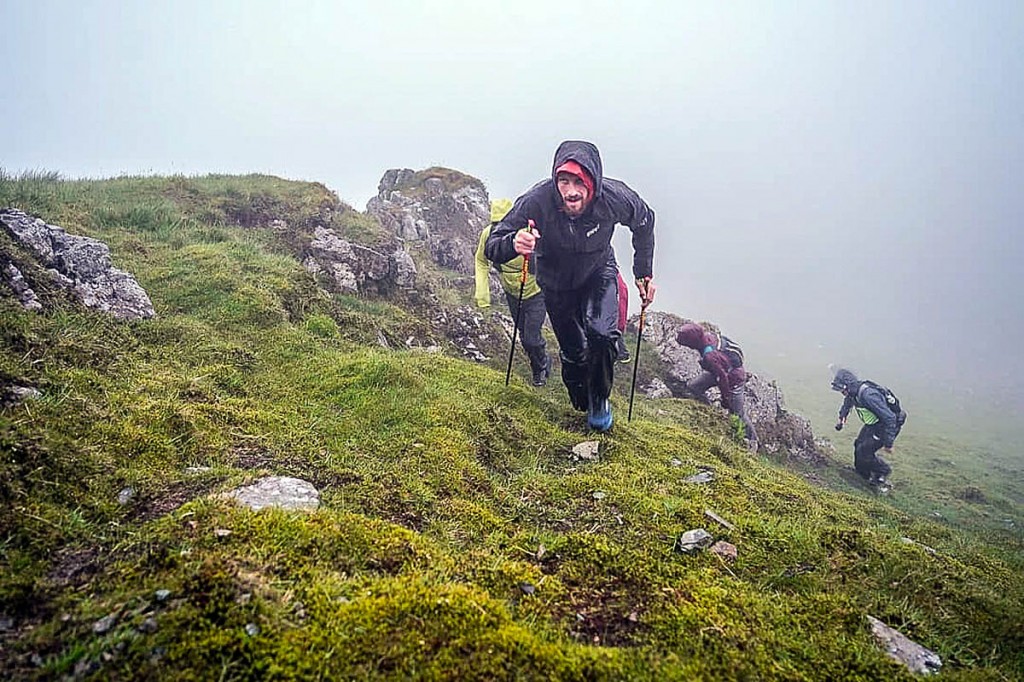
Paul Tierney tackles the eastern fells and battles the weather during the early part of his challenge. Photo: Andy Jackson
“Because you’re out for such a long time, there were times when I was really enjoying it – both the scenery because the weather was good at times. Different fells I hadn’t been on, because I hadn’t reccied the whole route. Seeing the far western fells for the first time – I’d been over that way but I hadn’t done all the Wainwrights – that was really motivating taking it in and enjoying it.
“But that was mixed with times when I was suffering and I was hungry and tired so I wasn’t appreciating it as much as I could but definitely I enjoyed large parts of the whole thing. Maybe not so much the scenery but the different groups of people I had with me. Of course I appreciated everyone who was out there but sometimes you just had a better banter with a certain group, like a couple of the lads I run with from Ambleside helped me on the Monday morning from Kirkstone Pass. That was nice to have those guys there. Other times having runners I look up to, much better runners than me, would come out. Rob Jebb came out on the Sunday and Josh Jardine. Guys I looked up to and respected giving their time to me was just a really nice thought that they’re willing to help.”
Tierney admits that he leant heavily on Steve Birkinshaw’s knowledge and experience in bettering the runner’s time.
“Steve’s the nicest guy you’ll ever meet and he didn’t want his record to be broken obviously, but at the same time he knew that he had all this help and he’s the type of guy who would want to be involved and give his help. It’s like a bittersweet thing. He wanted to keep his record but at the same time he didn’t want to stand in the way of someone trying to beat it. He was really gracious and he couldn’t have done any more for me.
“He met me in January 2018 and we looked over his maps. He gave me loads of advice, came out and did the first leg with me which was really nice – what a way to start it, to have him navigate that leg – and then he was back out on the Tuesday; he did a long section there as well. He would have been at the finish but he was at the university in Newcastle. I can’t say enough about him really. I still feel his record is a bit more impressive. He came up with that route and gave me a blueprint to use. If he hadn’t done it, I’d have been at a massive disadvantage.
“It’s very different from when Joss did it. There wasn’t as much known about it; there wasn’t the internet; he couldn’t look at his GPX file. Steve just left this big blueprint for me and everyone who comes after is going to find it a little bit easier. Someone’s going to come along after me and use my experience and Steve’s experience. I can’t fully say mine is more impressive than his. It was only seven hours, for a start, which sounds like a lot until you think: it’s a full week and there’s not really that much difference between them. I think Steve deserves a lot of credit not just for what he did but for my round as well.”
Looking at Tierney’s route, which snakes around the Lake District largely following Birkinshaw’s course, it’s difficult to discern if there’s a faster way round. Is his route the fastest?
“Because there are so many different combinations, maybe it isn’t but he had chopped a good bit of distance and climb out of Joss’s attempt and I just thought: it’s tried and tested. It took him six months to come up with and I thought, if I’m going to do it, I don’t have six months to spare trying to come up with anything better especially for someone who isn’t as navigationally gifted in coming up with a route so I knew I’d be up against it to do anything better, so I thought I’d take my chances. It was almost exactly the same, but there were a few little bits where we went differently but nothing major.
“I didn’t want to risk coming up with something completely different; then I wouldn’t be able to predict how long the legs would take me. It just meant I could say: I’m going to chop time out here, here and here; I’m going to rest less and hopefully at the end I’ll be a little bit quicker.
“Even the stuff that looks convoluted, a friend of mine Neil McKenzie, he spent a lot of time with me recceing, going over the route, and he’s ring me or text me and say: Steve shouldn’t have done that; we’ll try this, and an hour later he’d ring me and say: scrap that; it’s not going to work because you’d have to drop too low.
“I thought about the first day on Latrigg. I thought: we’re going to be on those hills again on the Wednesday, we’re going to be on Skiddaw, and I thought I’ll just leave Latrigg out and go straight to High Rigg and I’ll do Latrigg at the same time as I’m doing Lonscale Fell, I’ll just go a bit lower. In the end I thought actually I’ll be totally knackered by then; I’ll have to drop 400 or 500m, do it, turn around and climb again, and I thought it’s probably not quicker.
“So things that look obviously quicker in reality, you have to factor in how tired you’re going to be at the time as well. I’m sure someone with good experience of devising routes could try and do something better, but not me.”
His route avoided descending Broad Stand, the notorious scramble-cum-climb between Scafell and Scafell Pike, which has been the scene of fatalities. Was it a deliberate decision to miss it out?
“That’s the way Steve did it. Because you have to do Lingmell, it didn’t make sense to join up Scafell and Scafell Pike like you normally would. We came down the West Wall Traverse from Scafell then cut to Lingmell. Is it that much slower to come down Broad Stand? I’ve never even gone up it; when I did the Bob Graham Round I went up Lord’s Rake. It just made sense because of the way the route was laid out.”
The help and support of his fellow runners and partner Sarah McCormack was vital in helping him complete the round.
“I never looked at a map, except between sections but I never took a map out while I was doing it. I knew where I was going because I’d reccied it for some sections, but I didn’t want to think about that. I just wanted to concentrate on moving. That’s why, when we were coming up with the logistics, I tried to pick someone who either knew the fells very well on the section they were doing or someone who was a very competent navigator. I thought: that’s one less thing for me to worry about.
“We made that particular person the ‘captain’ of that particular section. They were then responsible for the other two runners, so it took a bit of pressure off us.”
In a challenge as daunting as the Wainwrights, peaks and troughs are inevitable – mental and emotional as well as topographical. What were his highlights and lowlights?
“There were a few ‘best’ times. The finish is the obvious one but the first day running with Steve was good, just to get running. Having certain people: Sunday with Tom Gibbs, Josh Jardine and Rob Jebb and Astrid Gibbs as well. I know them all; I get on really well with them. I didn’t have to worry about navigation because Tom is amazing at nav. The weather wasn’t great; it was the Langdale fells but I had a great time with lots of banter. Rob Jebb texted his friend who works for a company called Comfyballs that makes boxer shorts. He said: ‘I’ll get on to my mate and get a few pairs sent to Ambleside for you.” This sort of rubbish, having a bit of fun, and feeling good, I thought: I’m going to break the record. That particular leg was really fun.
“Then my parents showed up on the Tuesday evening out of the blue – I didn’t know they were coming. That was nice and immediately after that Ambleside AC came out. It was their club run night and they decided to have their run to coincide with me so there were 30 of them standing on top of top of Great Mell Fell with a flag and they ran with me for the rest of that leg, so it takes your mind off the hardness of the whole thing. When all of these people have come out, it pushes you on a bit.
“There were tons of downsides. Tuesday morning I was at Side Farm in Patterdale. Sunday night had been really difficult weather so I was carrying fatigue into Monday. Monday was a massive hard section from Kirkstone Pass in the morning over to Troutbeck then into Kentmere and then a massive section to Martindale Church. By the time I got there it was 8 or 9 o’clock in the evening and I was totally wrecked. And then I had another leg that night to get over to Patterdale. By the time I got there I was absolutely done. Getting up next morning, I could barely step out of the van and I had two more days to do.
“Steve started that section about 5am or 6am the following day, but I started it at 9pm so I thought that was definitely an advantage because I was starting the Patterdale section while he was still in Martindale. I knew I had to go and do that section; that was the worst thing about it. I was so tired but if I didn’t, it would put me back where Steve was and it was too early to go to sleep anyway. I didn’t want to stop for the day but I was too tired to go on.
“One of my mates, Joe Mann, did about 16 of the Wainwrights with me was also doing some support in the van. When I came into Martindale he was all business. He said 10 minutes to have something to eat; a quick lie down then off you go. I just thought ‘you can piss off; you don’t realise how tired I am.’
“He was forgetting I’d got totally battered so I got really narky with him. I needed a bit longer; I think I took an hour but that was a really integral part of being ahead of Steve.”
What preparation did Tierney undertake for the challenge?
“I suppose I’d reccied two-thirds or three-quarters of the route with various long runs. That started from 1 February but I was thinking I’m going to start my training at the end of December so I was fairly consistent with high mileage and days on the fells right from January.
“There were just lots of long recce days but doing some races as well. But it was all geared to June so there weren’t as many of the shorter races I’d have liked, but you’d have to count races I’d done in the previous two years too, such as the Tor des Géants. That was a massively beneficial race for experience, just knowing how I was going to feel four days in. Both times I’ve done that race I’ve finished quite strong so I felt I could go on so mentally that was really positive.
“I did feel knackered but I wasn’t completely broken. Also doing consistently decent mileage for the past three or four years. It’s a cumulative thing. The training this year was heavy pack on your back and lots of hiking as well. I certainly wasn’t running all the hills, but just trying to make it.”
Was there a particular eating regime he followed in the run-up to the Wainwrights and during the event?
“I’m not particular about nutrition. I ate all sorts of stuff. In my preparation I spoke to a really good nutritionist called Rebecca Denton. She came and gave a talk at the club; she’s brilliant. She’s not dogmatic about diet. Some people are very set in their ways but she was open to anything. If you were a vegan, she would deal with it. If you were more into eating meat or low fat or carb, she just presented facts and basic principles to stick to. That helped me to make sure I was eating the right things in the run-up. But during the event itself, you just get to a point where there’s a particular thing you want and that’s all you want. Chips was my thing: they’re salty and there’s a bit of fat in them, they’re tasty so I wanted them, for three solid days, that’s all I kept asking for.
“I’m not terribly picky about what I eat. If you’re going to stress about having the right thing, it’s just another stress. You’re much better off getting the calories in. They’ll be used by your body because you’re just burning so much. It doesn’t matter, you can just stick anything in.
“I struggled with my stomach; my stomach swelled. There were times when I looked like I had a proper gut. There was a feeling of wanting to go to the toilet all the time but not being able to. I didn’t actually need to; it was just what was going on in my stomach.
“I was eating a lot but I was also moving and my digestive system was just totally out of synch. And the actual impact of running so long was probably upsetting my gut as well.
“Also, if you’re running the blood flow isn’t going to where it needs to go to digest, because it’s going to your muscles.”
In the film, his running mates joke about Tierney enjoying smashed avocado. The record may have been smashed, but none of the trendy fruit, he says. “I didn’t actually have smashed avocado; the lads made that up.”
A large contribution to the successful completion was the right mental attitude over the six days.
“As Steve advised I did break things down into small goals. I’ve done races where I’ve let myself think about the finish or look at things in too big a chunk and mentally it’s really disheartening and I’ve not finished races because mentally I’ve just let my head get the better of me. In the last few years I’ve worked on that a lot and read a lot of stuff about the psychology. Thinking certain things can just make it feel easier in the effort level. I think I’m quite good at managing the mind or I have improved at least.
“But also not letting your mind slip to finishing and just thinking about not even necessarily about the next hill, but something you need to do, such as ‘I need to eat in five minutes’ so it’s just another thing to occupy your mind. Then when I was feeling tired I just said to myself I’ll move at the pace I can move and in an hour’s time I might feel better.
“Even though I might have laid down and slept on the fell for five minutes that’s actually enough sometimes and you feel better. Sleep is probably the most important thing you can do. But when you’re doing something like this you can get away with very very little and just a little reset like that every now and again, I can tell myself in an hour I’ll sleep for five minutes. Then you just had to focus on that hour.
“So Steve’s dead right. But then I was thinking of other things, like, if I stopped, all these people who had done so much for me would just get nothing. It’s probably the first time I’ve done something and thought: there’s no way I’m going to stop. It’s not that I wasn’t having low moments but I knew I would come round again and be all right.
“Once I said I was doing it and started, then barring horrendous weather or breaking a leg or something like that, I would at least get round. Maybe I wouldn’t break the record but to me it was still worth doing.”
At what point did he think he was in with a chance of breaking the record?
“I thought on the Sunday I was feeling so good and I was moving well and the people with me saw I was in good form. That was in Langdale over Loft Crag, Pike of Stickle, Sergeant Man. I was having great fun. After that when the weather came in and changed, that was a wake-up call – that could happen again or you could fall – you’d better stop thinking about the finish. That was too early.
“So I didn’t think about it again until the second-last day. I could see from times I was ahead. I knew I could do it but I wasn’t admitting it to myself. That was on Binsey and behind Skiddaw and Whinlatter. I probably only fully said, yes, I’ll do it when I got to the car park that night and we only had two legs to do, about 16 hours. So I knew barring a total disaster I would probably do it.
“But at that stage my knee was giving me real trouble as well so even then I couldn’t say for certain I would do it. We set out to do all those fells around Rannerdale: Grasmoor, Eel Crag, lots of little technical bits I could easily fall on so I didn’t want to be thinking about it.
“I didn’t have any hallucinations because there were always people with me. This only occurred to me afterwards, because I have had the sleep monsters in the Alps on the Tor des Géants. I did feel like falling asleep on my feet at times but no hallucinations and that must have been because my brain was occupied.
“Even when I was tired and not talking, I could still listen to someone else in conversation and that’s what I did a lot of the time. I was happy to listen and that probably just staved off those mad, funny thoughts.”
The selection of certain fells in Wainwright’s books can seem a little arbitrary. Did he ever curse the writer for including some peaks?
“I was really annoyed at times. Binsey is the obvious one that just stands on its own. The second day started at Ennerdale Scout hall and some of those fells in the West, there’s nothing special about them, though it was nice because I hadn’t been on them before but the weather wasn’t great at that time and I thought, there’s not much to write about these fells. They’re not particularly inviting but Binsey was by far the worst because of all the road you had to do to get there. Leading up to it I thought that would be quite good – a break from running on the fell – but six days in I was struggling on that section. I was really tired and everything was irritating me. I was feeling rubbish; it was hot. But it is was a lovely view from the top of Binsey so I can see why he picked it, but in the film I’m not too complimentary and I curse when I’m talking about it. Maybe I should have tried to edit that bit out but at least it shows that was probably my least favourite moment.”
If you look up Paul Tierney online, his Wikipedia entry describes him as a hurler first and runner second. Is it time for a retitling of the piece?
“I quite like the fact it says that because that’s what I grew up playing and I played until my early 20s. There would be 80,000 people at the all-Ireland final; it’s a massive sport but it’s still amateur, so that’s a nice ethos about the game but it belies the size of the sport in Ireland. To me, it’s the most skilful field game you can play. So I quite like the fact is says that but a friend of mine pointed out you can edit it on Wikipedia. I don’t know who first came up with the page but some of the information is incorrect. I do have an all-Ireland medal, so I was a bit pissed off because whoever took the time to do this didn’t get it right.”
And finally, what’s next for the Cumbria-based runner?
“Next year I’ll do a couple of long runs, maybe Cape Wrath and Tor des Géants again.”
